Test Drive Review of the Mercedes-Benz GLS580|How Does the E-ACTIVE BODY CONTROL Perform?
公開日:2022.11.10

コンテンツ
GLS580 4MATIC
My younger brother, who occasionally appears on this blog, bought a car as usual.
This time, it’s the Mercedes-Benz GLS580 4MATIC Sport Chauffeur Package. As of the time of writing this blog, the GLS580 has already been removed from the Japanese lineup, and currently, the only new models available are the GLS400D and the AMG GLS63.
Previously, I considered purchasing the GLS400d and even test drove it. At that time, I was somewhat underwhelmed by its surprisingly light and nimble driving feel, feeling it lacked the weighty presence one might expect from a Mercedes with an “S” in its name.

This time, it’s the higher-grade GLS580. Besides the obvious difference in powertrain compared to the GLS400d, there is another major distinction.
That is the latest Mercedes suspension system, the E-ACTIVE BODY CONTROL (with Dynamic Curve function).
Unfortunately, this suspension is not available on the Japanese-spec GLS400d and is exclusive to the GLS580. I clearly remember feeling a bit disappointed wishing it could be fitted to the GLS400d back then.
In this review, I’ll share impressions comparing it to the GLS400d and also discuss the E-ACTIVE BODY CONTROL (with Dynamic Curve function).
As usual, this blog focuses primarily on driving impressions, so for detailed evaluations of usability and interior space, please refer to other media sources.
Appearance and First Driving Impressions
Seeing the GLS parked, it’s undeniably huge. It barely fits within a coin parking space, and from the side, it almost looks like an “elephant.”
With overwhelming presence, it exudes an extraordinary sense of luxury and atmosphere. Climbing up into the rather high driver’s seat and settling into the seat reveals a lavish, magnificent interior. Truly befitting Mercedes’ top-tier SUV.
Almost every comfort feature is included, so there’s hardly anything to complain about.
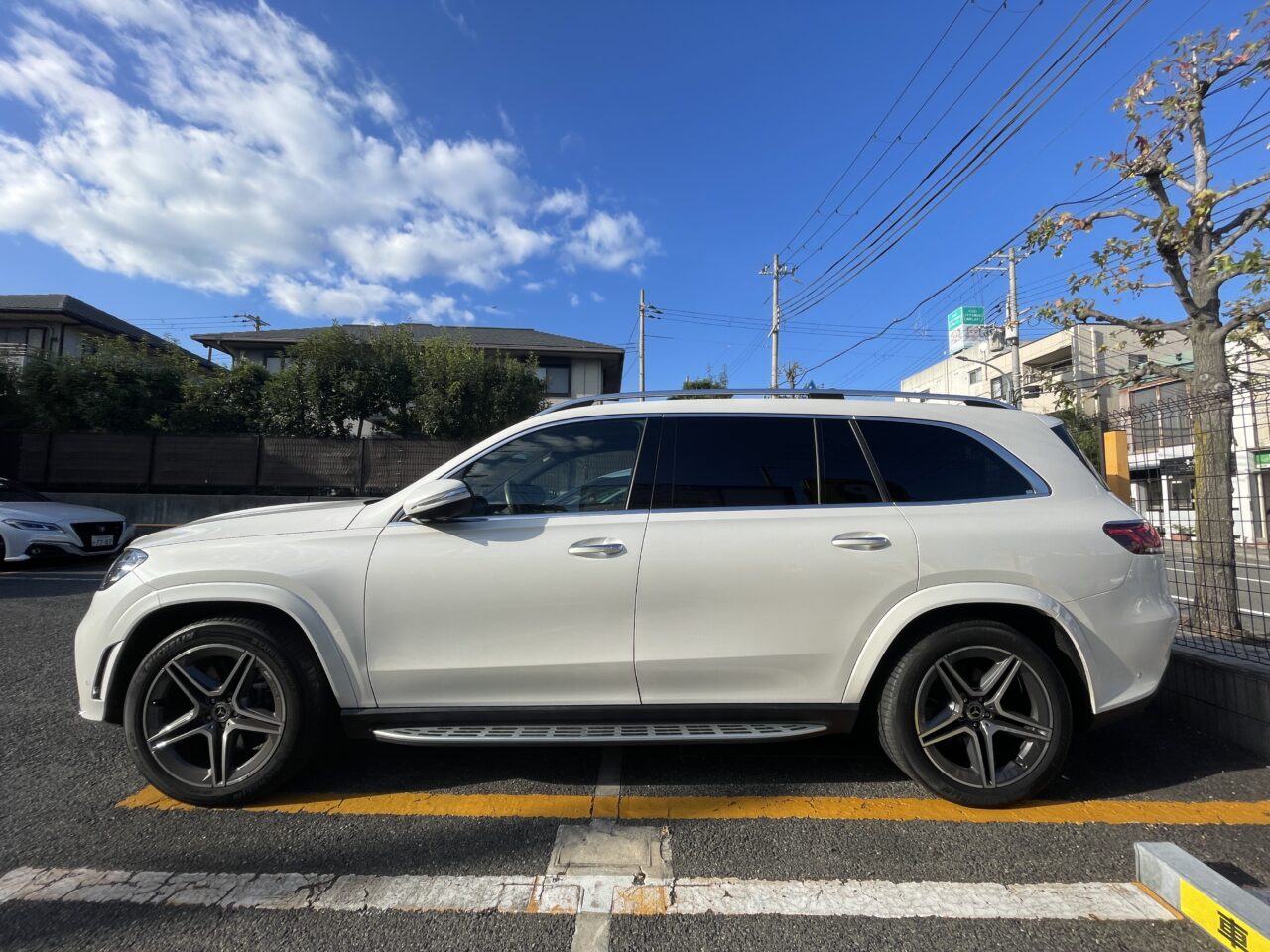
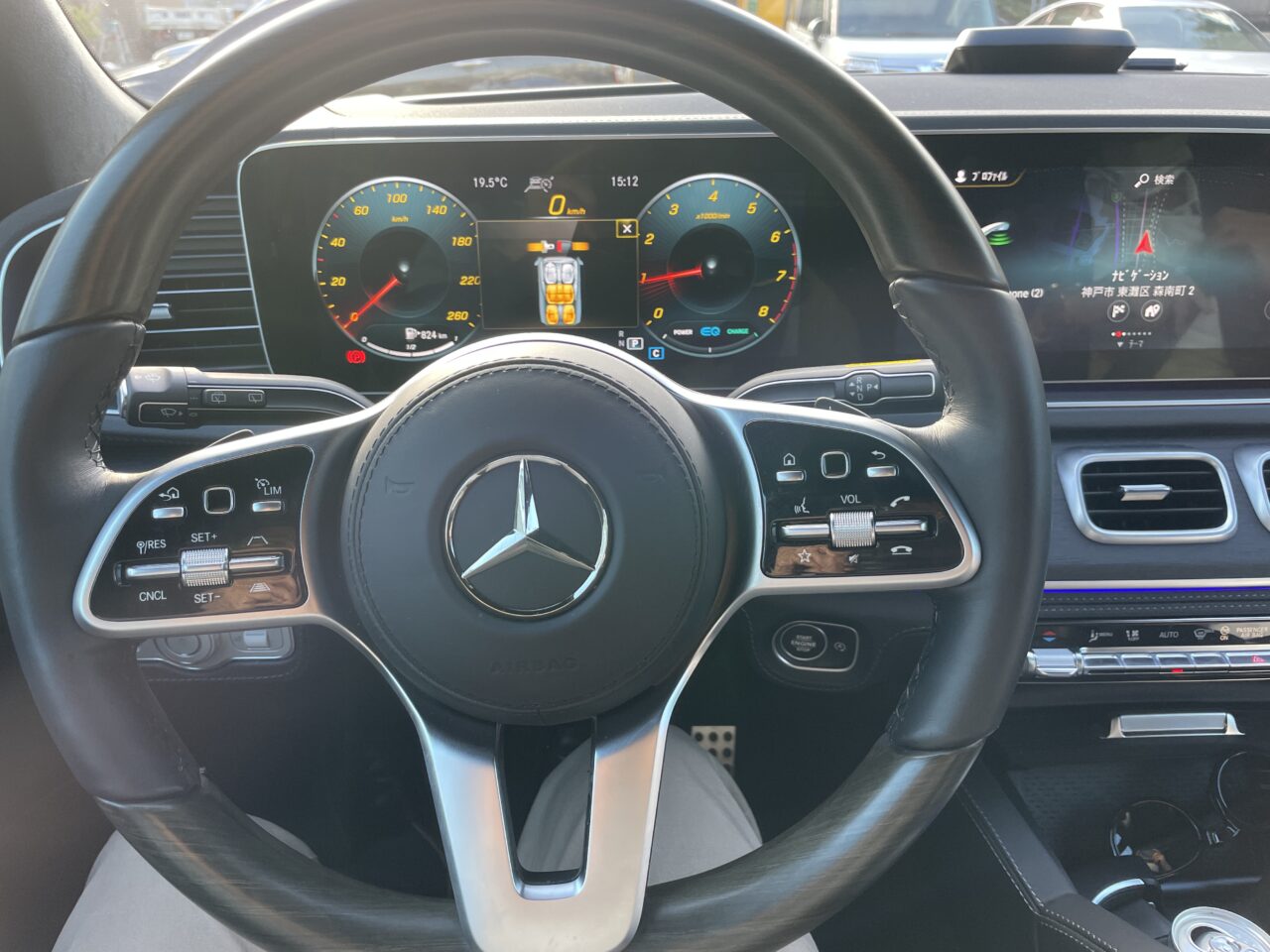
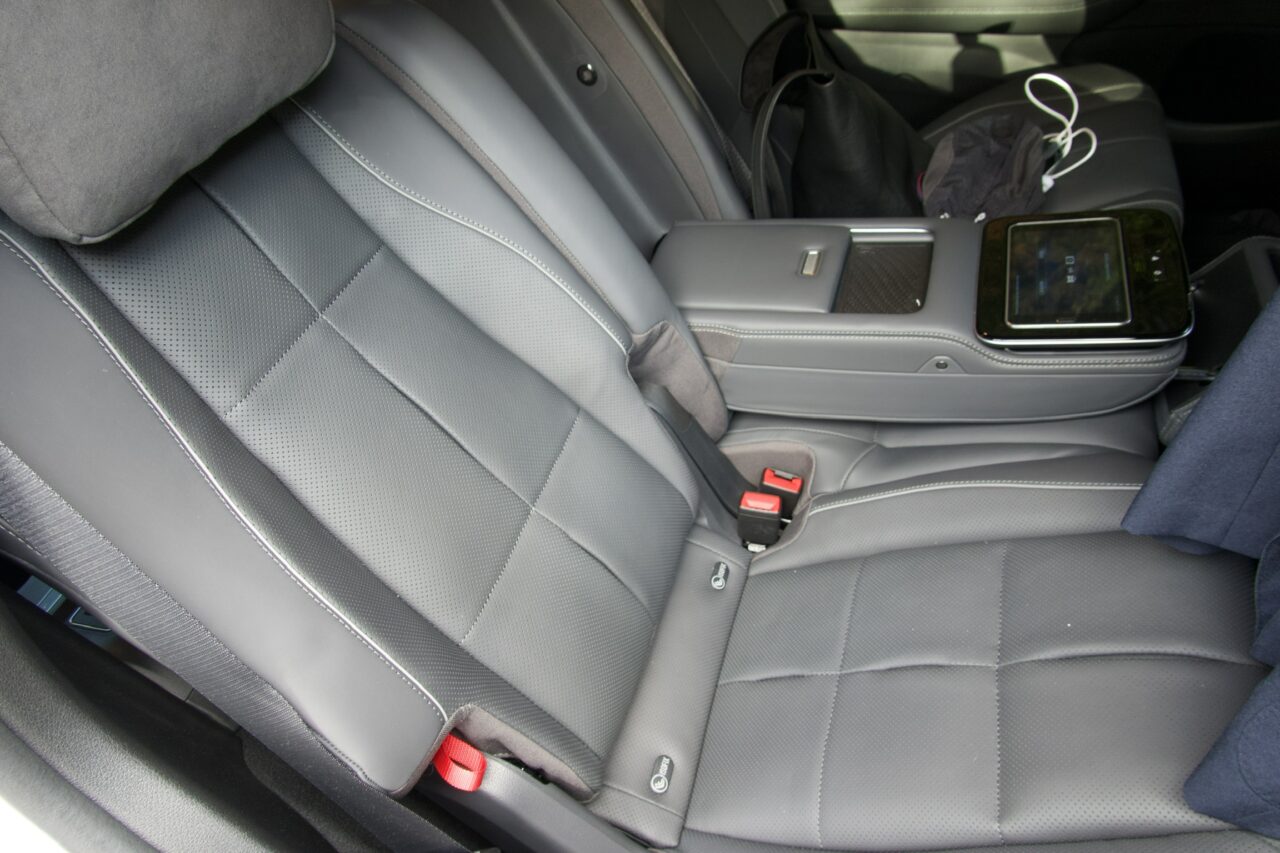
Rear seats. Spacious thanks to the Chauffeur Package.
The generously sized seats with numerous adjustment options are truly comfortable. This is definitely a car made for long-distance driving.
Starting the engine and slowly pulling away, I couldn’t help but exclaim, “So light!!” It’s hard to believe this giant weighs over 2700 kg. Thanks to the ISG (Integrated Starter Generator electric motor assist), it moves forward smoothly. The steering is also light, making it hard to tell whether you’re driving a large or small car.
At first, I wondered if this was the same light feeling I experienced with the GLS400d. As I increased speed, around 40-50 km/h, I began to feel a more solid grip and weightiness through the steering that I hadn’t noticed in the GLS400d.
“Oh, this might be pretty good!” I said to my brother as we headed toward the mountain roads.
From City Streets to Winding Roads
Driving through busy city streets toward the mountains, the throttle response at takeoff is so sharp that it takes some getting used to. You have to press the accelerator gently or the car will lunge forward. I tested the suspension over uneven pavement from roadworks at low speed to check its movement.
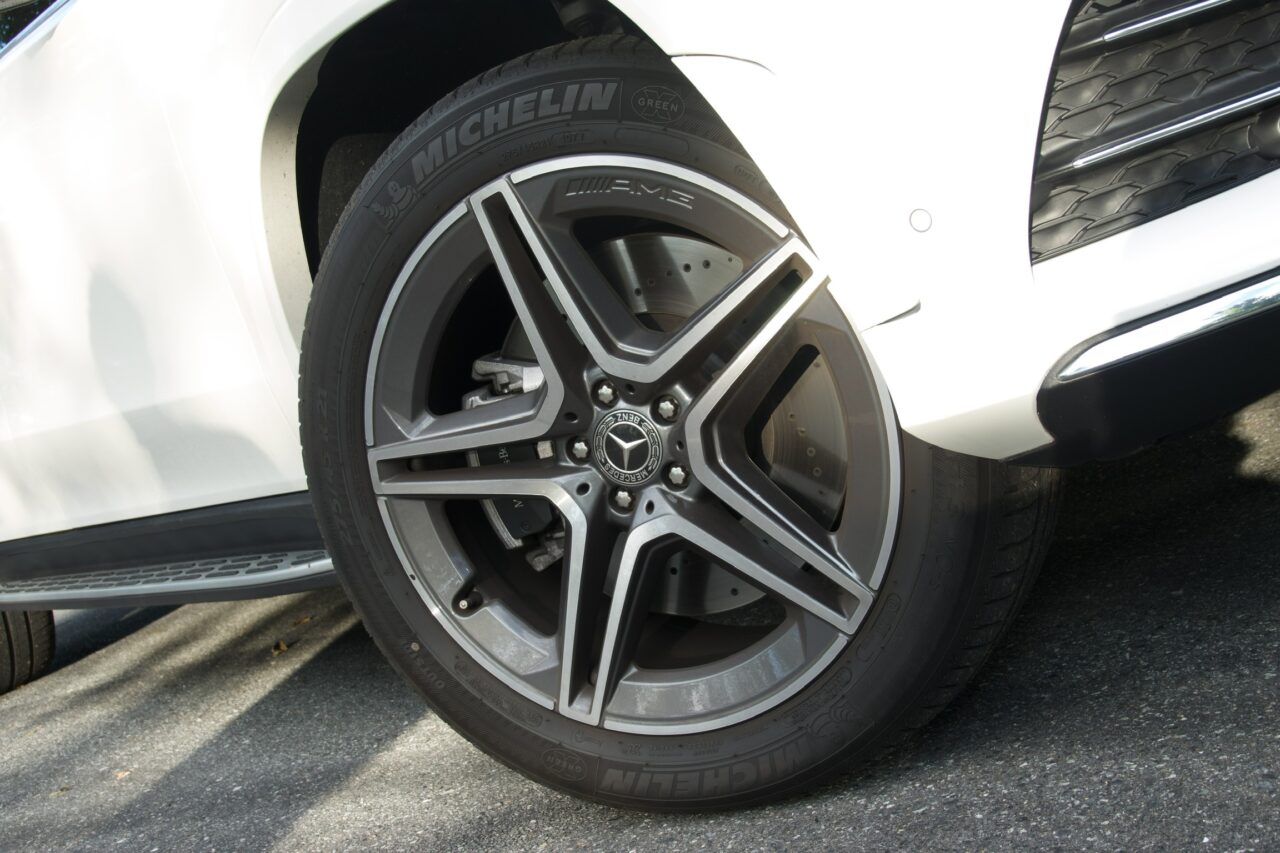
First, I drove in Comfort mode, but at low speeds typical of Japanese city streets, there was a slight trembling vibration that was a bit noticeable. Since it’s an air suspension, some of this might be unavoidable, but given the high expectations for Mercedes’ top SUV, it was a little disappointing.
Honestly, I think the ride comfort of the BMW X7 35d I previously test drove was better in city driving, and even compared to the Cayenne, the tire rolling feel of the Cayenne is smoother.
That said, this is a very fine, nitpicky comparison at a high level, so please keep that in mind. Of course, for normal driving, almost no one would say the GLS ride quality is bad—it’s definitely comfortable.
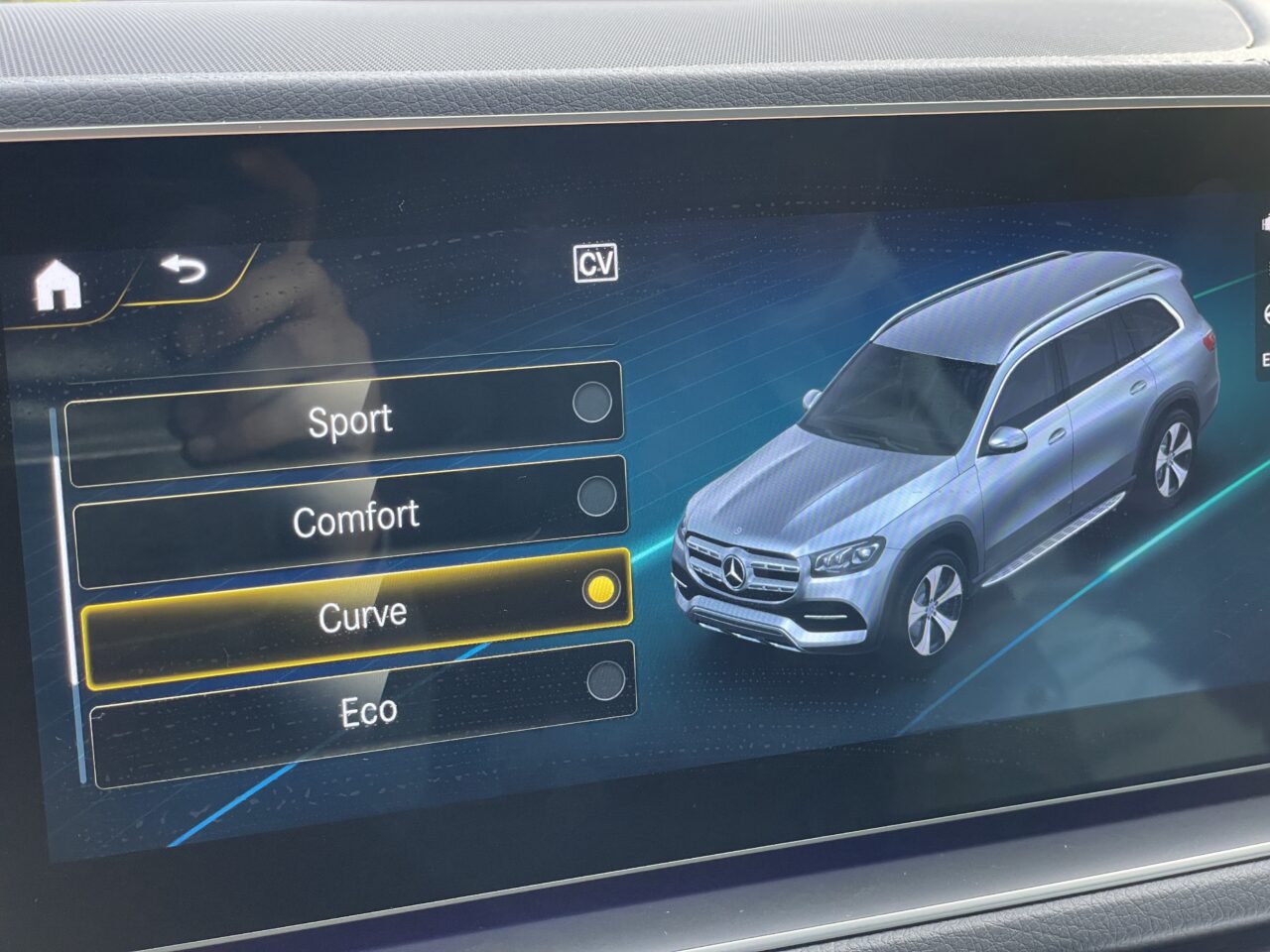
E-ACTIVE BODY CONTROL features a Curve mode
Next, I activated the E-ACTIVE BODY CONTROL and drove in Curve mode. This system uses cameras to monitor the road ahead and electronically controls the 48V electric hydraulic units on each wheel, the air suspension’s electronic dampers, and air springs. However, at low speeds, it doesn’t feel much different from Comfort mode.
Leaving the city behind, I entered a tight winding section.
For such a tall, large SUV, this is not a road you want to push hard on. In Comfort mode, body roll is quite pronounced. It’s nowhere near as sporty as a Cayenne. The body leans heavily, and if you’re not careful, the trajectory will widen significantly outward.
Trying Sport mode, the suspension stiffens a bit, but the sway remains large. If you have family onboard, you really need to drive carefully to minimize lateral G-forces.
Then, I switched Curve mode back on.
The GLS transforms completely. I often say “it transforms,” but this time it’s on a different level. It’s hard to believe it’s the same car. On mountain switchbacks at around 30-50 km/h, the car doesn’t sway at all. It doesn’t lean. It’s like a sports car—no, better than a sports car in terms of roll control.
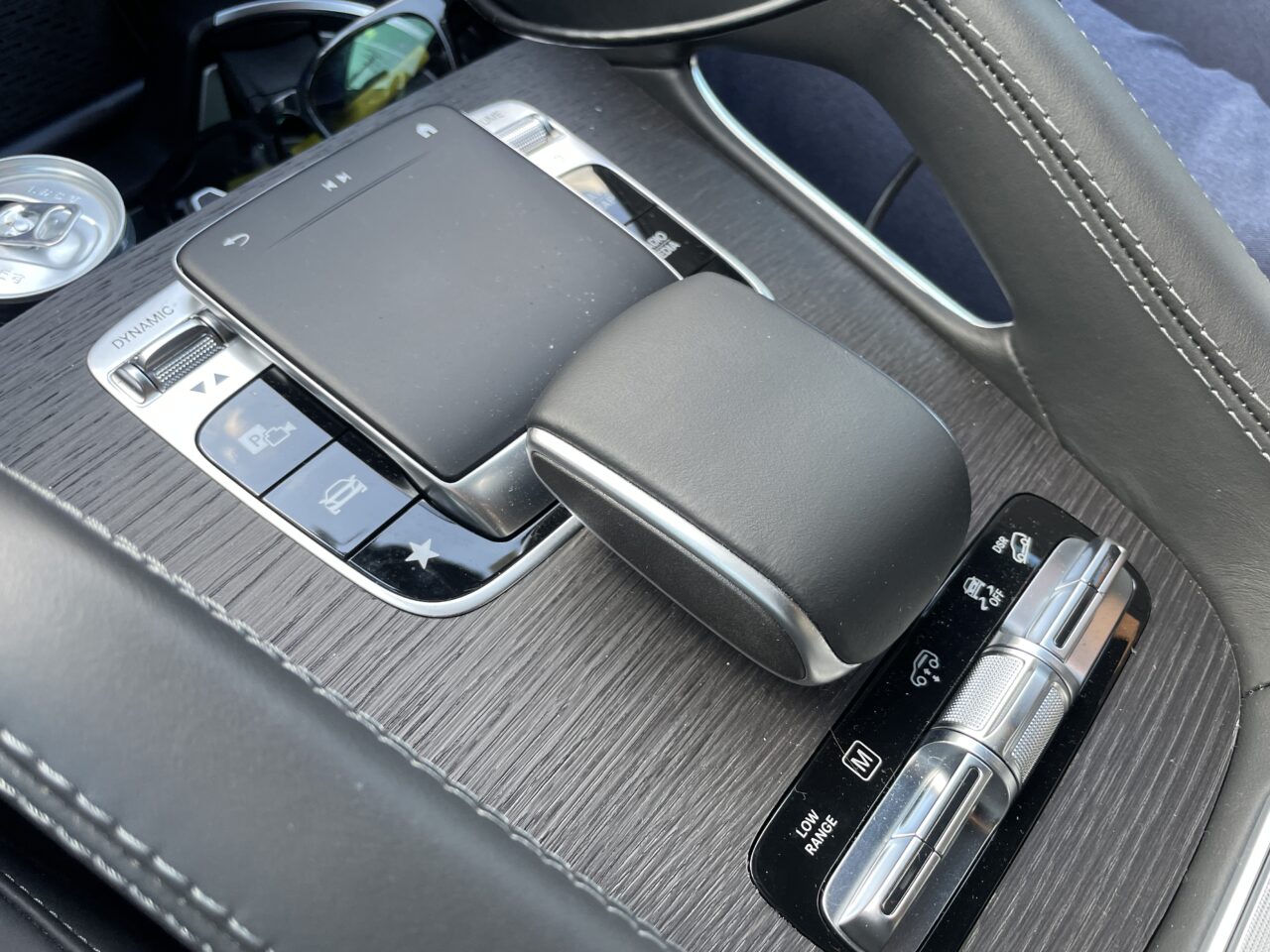
The E-ACTIVE BODY CONTROL prevents occupants from swaying by tilting the vehicle inward during cornering, and its effect is tremendous. It feels like driving on a banked curve, truly a “magic carpet.” While Porsche’s PDCC also reduces roll, it does so by electronically controlling stabilizers, stiffening or loosening them.
However, this E-ACTIVE BODY CONTROL instantly extends the suspension on the outside of the curve to balance the body tilt against centrifugal force.
That’s why it truly stays flat.
By the way, the strength of this system can be adjusted, and I tested the middle setting, which I think is a natural fit for Japanese winding roads. At higher speeds, it allows a slight roll. So it’s best to adjust the Curve mode intensity according to speed.
Engine Impressions
Impressed by Curve mode, I sped through the mountain roads and opened the throttle on a straight stretch.
Even with 489 hp from the V8 twin-turbo, the heavy body means it’s not as fast as the horsepower figure might suggest. That said, there’s no feeling of power shortage. It has ample acceleration in any situation.
Also, there’s absolutely no turbo lag. The brief gap before the turbo kicks in is well assisted by the ISG. The torque delivery is so smooth it makes you forget it’s a turbo engine, reminiscent of the old Mercedes 5-liter naturally aspirated V8s. This effortless driving experience is very Mercedes-like.
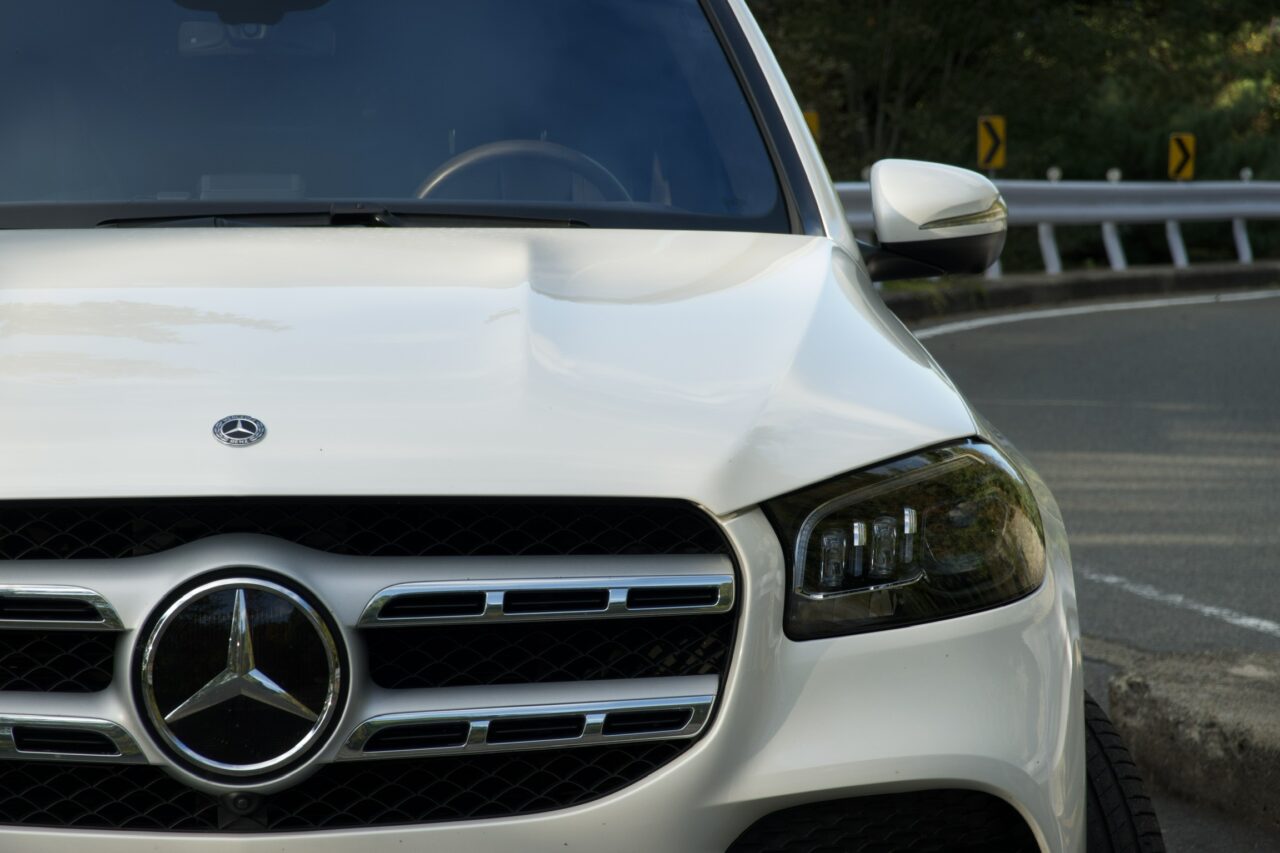
What impressed me most about this engine was its sound. It sounds really good. It delivers that deep, throaty V8 growl typical of Mercedes, and you can hear the engine sound clearly even while driving around town.
In Sport mode, the sound gets louder and much sportier. My brother, who has owned several AMG vehicles, said, “The sound is so good, AMG isn’t really necessary.” Indeed, it’s a great-sounding engine and recommended for those who love the feel of Mercedes V8s.
Impressions on Uneven Roads
The Royu Driveway tunnel, Royu Tunnel, has quite an undulating surface. It’s a great place to check straight-line stability, and with the GLS580, the impression differs greatly between Comfort and Curve modes.
As mentioned earlier, at low speeds in the city, the difference wasn’t very noticeable, but once you pick up some speed, the difference becomes clear.
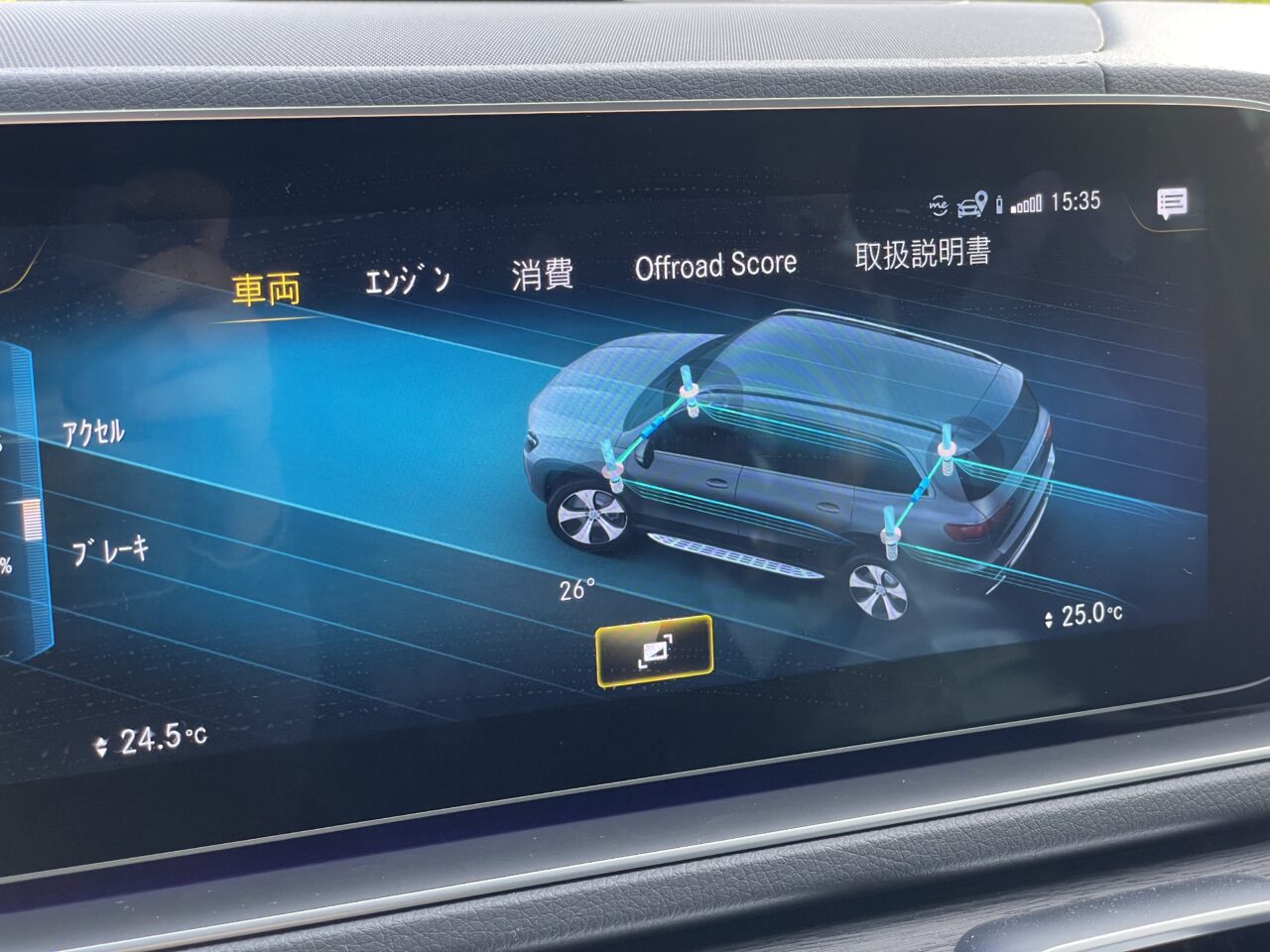
Suspension movement can be monitored according to road conditions
In Comfort mode, you can see the body moving up and down in response to the road undulations, but in Curve mode, the sway is reduced. This is very noticeable. You can actually see the suspension’s movements on the monitor, clearly showing the suspension extending and compressing to handle the bumps. The straight-line stability at this point is very high.
Comfort mode already offers a fairly flat ride, but if you want an even flatter ride, the E-ACTIVE BODY CONTROL is definitely worth having. This is truly a ride quality worthy of Mercedes’ “S” badge.
Overall Evaluation
This car is undoubtedly an SUV that prioritizes luxury. While Curve mode allows for somewhat sporty driving, it’s fundamentally a luxury vehicle.
If you want truly fast driving, you should choose the AMG GLS63.
It seems focused on comfort at higher speeds on rural national roads and highways rather than city driving. Therefore, in very low-speed urban driving common in Japan, the setup sometimes feels a bit out of place.
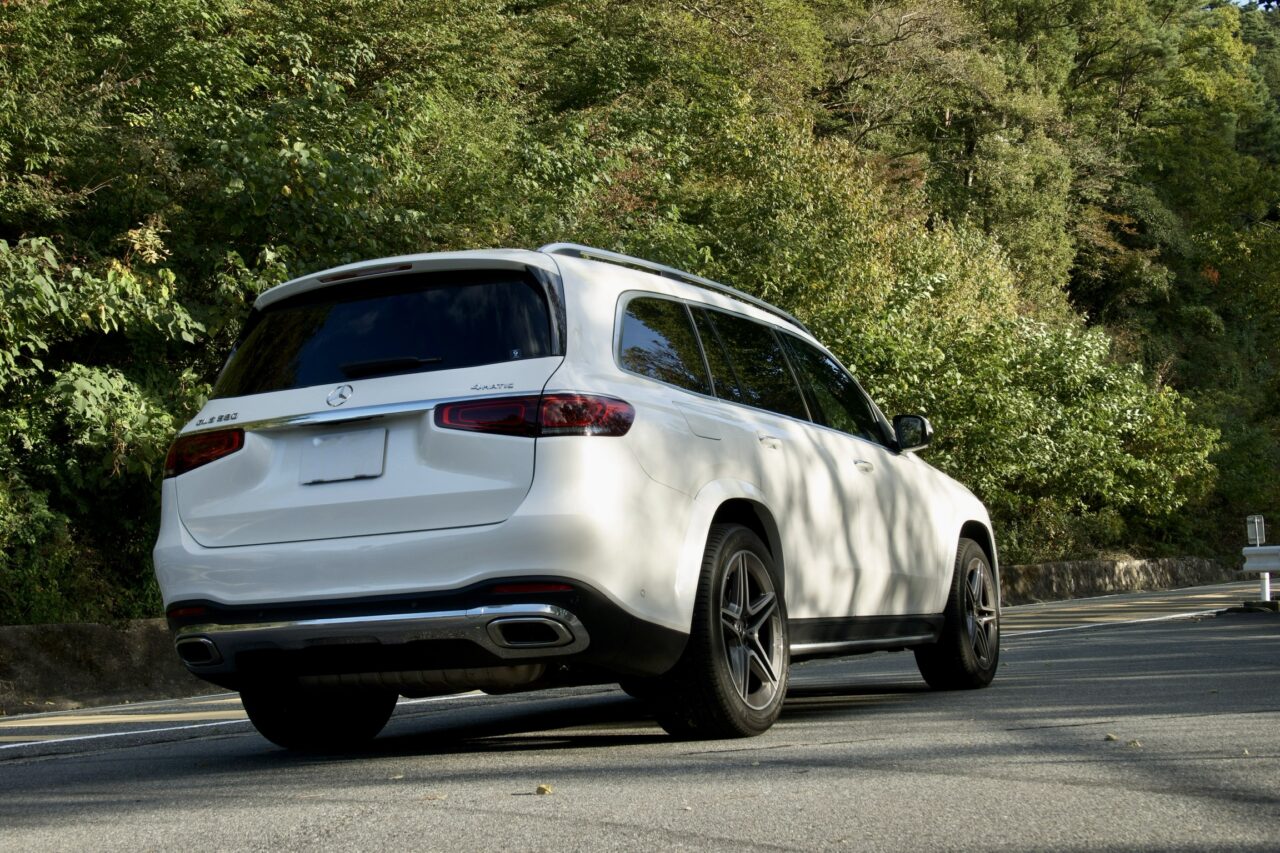
What you want from such a large SUV depends on your needs, but if you want comfortable long-distance grand touring with your family, the GLS is an excellent choice. Its true strength lies in the E-ACTIVE BODY CONTROL.
It’s unfortunate that the GLS580 with this feature is no longer available, but I sincerely hope Mercedes-Benz Japan will make this option available for the GLS400d as well.
It’s a great option that’s sadly not selectable in the Japanese market.
If the Mercedes SUV with E-ACTIVE BODY CONTROL makes a comeback someday, I would personally love to drive it again.
このブログが気に入ったらフォローしてね!


Comment ( 0 )
Trackbacks are closed.
No comments yet.